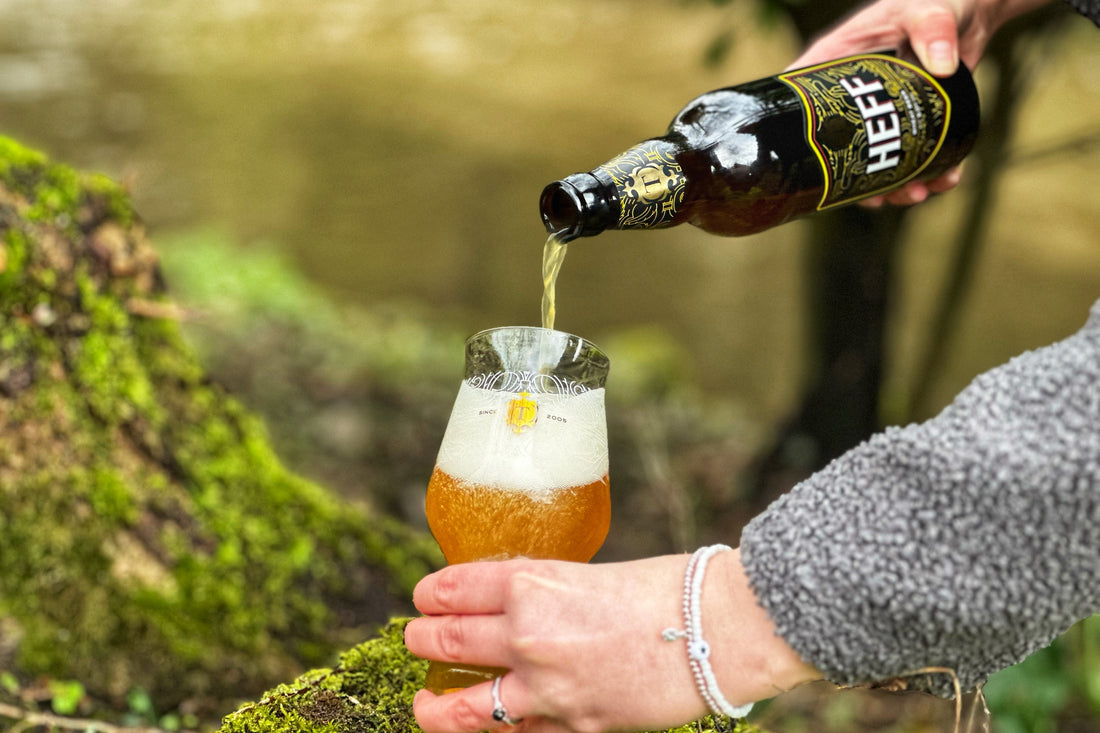
Heff 5% Wheat Beer
Share
Bavarian wheat beer is a firm favourite amongst myself and the brewing team. After what seems like an eternity of brewing hazy IPAs over the last five years, I have finally got round to brewing a beer style close to my heart again - Weissbier. In the early years of my brewing career, I had numerous trips to Bavaria with Meantime Brewing Company and was absolutely blown away with this particular style. Every time I’ve brewed wheat beer, I've always endeavoured to recreate those awesome bubblegum, banana and clove flavours I first encountered all those years ago.
Wheat beer is notoriously difficult to produce as it can so easily become infected, due to relatively high fermentation temperatures, which, combined with low bitterness rates and autolysis of the yeast, can result in a nutrient boost for any latent bacteria which may have survived through to the finished product. In addition, the high percentage of wheat malt in the grist can result in the lauter being particularly troublesome.
We settled on a classic wheat beer grist of 50/50 pilsner/wheat malt blend and just a touch of Cara malt, with a classic single decoction mashing schedule. What we really wanted more than anything was masses of banana, bubble gum and clove. Any brewer worth his salt will strive for these flavours when making a Hefeweizen, a biproduct of yeast metabolism as fermentation progresses. The unique flavour of Bavarian-style wheat beer comes from fusel alcohols, esters, phenols as well as other compounds. One of the main flavours is a compound know as 4 vinyl-guaiacol, which is actually added in the commercial manufacture of bubble gum (in a chemical format). However, with Hefeweizens it is produced naturally, a delightful characteristic of the enigmatic Bavarian wheat beer yeast. To succeed, it requires as much wheat malt in the grist as possible and a 43C rest prior to the main saccharification rest, to release Ferrulic acid from the wheat malt, which is the precursor for 4-V-G. Another strategy to increase enhance the Hefeweizen flavour profile is achieved by adopting an open fermentation. This I can most certainly vouch for. Indeed, Schneider Weisse Brewery have gone the full monty and chopped the tops off their cylindro-conicals. It is also possible to under-pitch the yeast and play around with oxygenation levels, which we did to some extent with this brew.
I have to say we’re all really happy with the beer overall. It has lashings of banana, bubble gum and clove, has a great mouthfeel and is thankfully bacteria free! We also managed to krausen it for lots of natural carbonation, producing smaller and gentler CO2 bubbles which come out of solution more slowly - a method eminently superior to forced carbonation. We packaged the beer with a significant amount of ‘speise’ left to ferment in the bottles. This will result in refermentation in the bottles and the yeast count will increase, so it’s very important that the sediment in the bottle is swirled and added to the glass and that kegs are inverted daily.
One final point:- Proper German wheat beer needs to be drunk fresh before the esters start to diminish, which is why we’ll be getting it out to you ASAP. So if you’re fortunate enough to get your hands on a bottle, don't even think of ageing it - Get it drunk!
Written by Rob Lovatt, Head Brewer/ Production Director at Thornbridge Brewery


